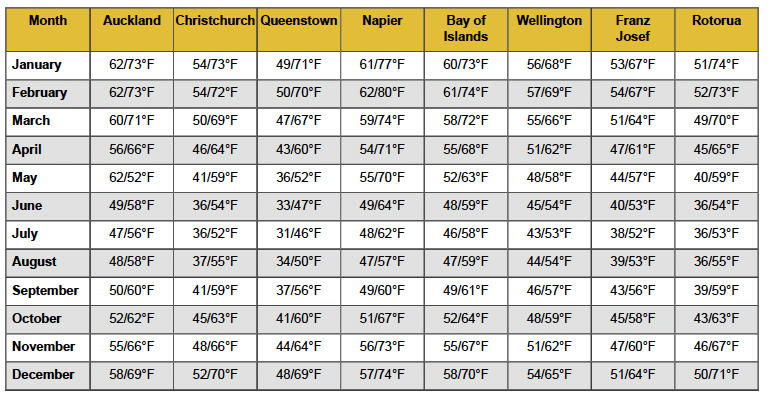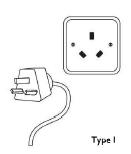New Zealand

Fun Facts From Globus Tours
-
-
- There are seven sheep to every person in New Zealand
- Taumatwhakatangihangakoauauotamateapokaiwhenuakitanatahu, a hill in Hawkes Bay, is the longest place name in the world
- New Zealand gave women the right to vote a quarter century before the US
- New Zealand means “land of the white cloud”
-
New Zealand sits at the southeastern edge of the world – a tiny strip of land about the total size of Colorado, yet packed with a menagerie of landscapes. It is a land of beautiful contrast, from the native Maori people to the influence of the former English rule. Modern and traditional art, quiet vistas, and serene mountains blend with aqua shorelines while thrill seekers everywhere fill the air with shouts of exhilaration. This is the place to come for culture, beauty, adventure, and relaxation. Get ready to experience life “Kiwi” style, the unique bird after which the people of New Zealand are nick-named.
Whether you’re traveling as a couple and looking for a romantic getaway, a family, or a group of adventurous friends, New Zealand is a small country offering endless experiences. With majestic scenery, friendly locals, music, native food and art, total adrenaline rushing activities, and peaceful relaxation to be had, it’s a country that should go on everybody’s bucket list – a guaranteed thrill and an unforgettable trip.
Auckland
Located on the more populous North Island, Auckland is a great place to begin or end a New Zealand vacation. It’s fun, friendly, and teeming with life and activity. Surrounded by harbors, the city has more boats per person than anywhere else in the country, giving it the name, “The City of Sails.” With your free time in Auckland, just strolling around and taking it all in is a good way to spend a few hours. Queens Street has dozens of cafes, shopping spots, and restaurants as well as a wide diversity of people. You’ll want to check out the Sky Tower too – the tallest man-made structure in New Zealand and certainly the best view in the city. Here the Kiwi sense of adventure is on display. At the top of the tower there’s a skywalk that allows people to stroll around the outside perimeter with a harness but it’s an activity best suited to those not fearing heights. If you have time, the Otara Market just outside of Auckland is a Polynesian delight. Arts, crafts, clothing, music, and food clamor in this ethnic smorgasbord – it’s a fun cultural experience.
Bay of Islands
North of Auckland is the Bay of Islands, known for its stunning beauty and history. A sightseeing cruise is a must do for a chance to see some of the native wildlife including dolphins, whales, penguins, a variety of birds and more. While cruising see the “Hole in the Rock” and enjoy sub-tropical paradise. Back on land, check out the Waitangi Treaty House to learn about New Zealand’s past and tackle a hiking trail or shop in the local boutiques.
Waitomo
En route to Rotorua, make sure to explore the Glowworm Caves in Waitomo. The limestone chambers here are considered some of the most beautiful caves in the world, where guides will give you an informative commentary on the cave formations and the history of the area. The highlight of any visit here is the silent boat trip through the spectacular Glowworm Grotto. Floating quietly under the lights of thousands of glowworms suspended from the cave ceiling is like stepping in and out of a dream.
Rotorua
Rotorua is the soul of New Zealand so any vacation here must include it. This is where the Maori people still thrive and tradition, art, music, food, and agriculture explode out of the region! Hot springs and natural mud baths are an everyday part of life out here and the land is humming with typical New Zealand pride. You’re sure to get a touch of Polynesian fever here – the mud baths and hot sulfur springs, the Maori dance shows and native cuisine, and fabulous Maori art, there are so many ways to enjoy this island’s cultural gem. A highlight here is Te Puia, a fascinating geothermal wonder where you can find New Zealand’s largest geyser, boiling mud pools and stand on silica terraces before a steaming green waters with sulfur rims a striking orange. The Polynesian Spa is a fantastic place to relax in the healing waters, receive traditional mud treatments or get a soothing massage. You’ll also want to spend some time exploring the art in this area. Wood carvings are a traditional art form here that astound with tremendous detail – just as delicate as they are mighty. This is also a part of the country that thrives on sheep as their biggest industry. At the Agrodome you can witness an action-packed show introducing you to several sheep breeds and a live sheep shearing demonstration. You will also be impressed with the remarkable dogs used to keep the sheep under control. Rotorua promises to be a cultural highlight of any New Zealand vacation.
Napier
Beautifully preserved 1930’s architecture is Napier’s special point of difference. A national disaster resulted in Napier becoming one of the purest Art Deco cities in the world. But Napier is not just home to great architecture, it’s a lovely seaside town with shops, boutiques, bustling restaurants, and an abundance of outdoor activities. With over 50 wineries in the area, you’ll definitely want to try the Pinot Gris and Syrah, two of the region’s signature drops.
Wellington
As the capital of New Zealand, Wellington is home to the famous Beehive and Parliament buildings. It’s a compact, walkable city renowned for its arts, heritage, culture and natural beauty. Take a cable car ride to the top of Mount Victoria for stunning 360-degree views of the city, its harbor and lush green hills. Visit Te Papa for a glimpse at national treasures and stroll the Botanical Gardens.
Mount Cook
As you head toward the high country, Mount Cook is an essential destination on the southern island – a stunning area with pristine mountain vistas of snow-caked mountains. A helicopter ride, where you can hover above the impressive, untouched summits and rugged peaks, is a great way to see this symbolic mountain, a source of pride and curiosity for New Zealanders. If you have the chance to get out to the Tasman glacier for a little walkabout it’s well worth it and a great way to experience this region. The waters here are dotted with massive ice structures that have been naturally carved and shaped as if crafted by an anonymous sculptor. A stop at the Sir Edmund Hillary Alpine Center will give you invaluable insight into this remarkable land of peace and majesty.
Christchurch
Christchurch is the largest city on New Zealand’s South Island. With its luscious parks and well-kept residential gardens and trees, it’s fondly known as “The Garden City.” While the 2010 and 2011 earthquakes may have rattled the city and much of its stunning, classic neo-gothic architecture, it did not break its spirit. Efforts are being made to rebuild as a “city in a garden,” allowing for additional parkland and a reduced business district. The city offers much to do from open air concerts and cycling along the river to sophisticated dining and stunning views of the city and coast from the Port Hills. Nearby is the charming village of Akaroa, a former French and British settlement where plentiful native wildlife call its harbor home. These waters, surrounded by volcanic cliffs, feature stunning scenery and are home to fur seals, the rare Hector’s dolphin, and the white-flippered blue penguin—the smallest penguin in the world. Don’t miss a chance to view the city’s most fearless and entertaining street performers at the re:START village project, a shopping district built after the earthquakes that house retailers in unique architecturally-designed shipping containers.
Franz Josef
Franz Joseph is home to the spectacular UNESCO World Heritage site Franz Josef Glacier. Visitors here have a variety of opportunities to explore this exceptional area – take part in a glacier valley walk alongside the mighty Waiho River bed, experience a view from above with a flightseeing or helicopter tour, soak in the glacier hot pools, or hike to the top for incredible views of the rapidly changing terminal face of the glacier. The town itself has plenty of dining options or you can choose to picnic and take in the gorgeous scenery.
Queenstown
Perhaps the biggest attraction in New Zealand if you’re going for some scenery is Queenstown. It is the main reason that New Zealand is often referred to as “The Adventure Capital of the World.” There are a plethora of activities and stunning landscapes to keep you busy for days. This is the place most thrill seekers visit in order to bungee jump, mountain bike, or a take fast-paced jet boat ride on the Dart River. Either way, there are hundreds of fun ways to experience this exciting city. Queenstown is also known for its rugged surroundings used in the filming of The Lord of the Rings” trilogy. Tour the sights that helped make those films so extraordinary and made New Zealand known to the world as one of the most picturesque places on earth. Perhaps surpassing some of the impressive scenery of The Lord of the Rings film, is the UNESCO World Heritage Site – Fiordland National Park, located just outside of Queenstown. Home to Milford and Doubtful Sound this wondrous land will undoubtedly fill you with awe and inspiration. This is one of the most photographed places on earth and whether it is stormy or sunny, is beautiful in any light. A cruise on either Sound is an experience you won’t soon forget. After a heavy rainfall, you are likely to see waterfalls sprouting from the craggy crevices of the cliffs while on sunny days, the glistening waters and shockingly vivid colors contrast all around you. Along the way keep your eyes out for seals on the rocks near the shore and dolphins that often surface next to the boat. A great way to wrap up your time in Queenstown might be some shopping or a visit to a vineyard to sample some of New Zealand’s world-renowned wine. This fantastic city is loaded with activities and sights to suit every kind of traveler.
VISAS, PASSPORTS, AND OTHER ENTRY REQUIREMENTS
A visa for your visit to New Zealand is not necessary for US citizens. If you hold a passport from another country, check with your local consulate about requirements for travel to New Zealand.
All passengers traveling internationally are required to have a passport. Most countries require that the passport be valid for at least six (6) months beyond the conclusion of your trip, so please check the expiration date carefully. It is also recommended you have a minimum of three blank pages in your passport when traveling, as many countries require blank pages. Please carry proper identification (your passport) on you and do not leave it in your suitcase or hotel room. Most countries have laws that require you to carry your passport with you at all times.
Beginning in the second half of 2019 (exact dates have not been defined), US and CA citizens will require a visa for New Zealand. The New Zealand government is still finalizing the details of the visa but we know that visas must be obtained prior to departing the US through the New Zealand Electronic Travel Authority website (the exact website is still TBA). The cost is expected to be between $9-12.50 NZD per person. Information will be updated as it is received and known to us. The information that has been provided thus far by the New Zealand government can be found at https://www.mbie.govt.nz/info-services/border-changes.
The government of New Zealand has also implemented a visitor levy, which will be collected alongside visa and ETA fees. The cost of the visitor levy is $35NZD per person and is additional to the visa fee mentioned above.
COUNTRY CODES
The country code for New Zealand is 64. When calling to New Zealand from overseas, dial your international access code (011 from the US/Canada), followed by the country code, area code, and phone number. Phone numbers in New Zealand are 8 digits in length. Dialing from the US/Canada: 011 64 # ### ####.
CURRENCY
In New Zealand the local currency is the New Zealand Dollar. 1 New Zealand Dollar (NZD) = 100 cents
-
-
- Banknote denominations: $5, $10, $20, $50, $100
- Coin denominations: 10c, 20c, 50c, $1, $2
-
For the most current exchange rates, please go to our website at Globusjourneys.com/Currency.
Credit cards are widely accepted in New Zealand, and you should have no problems using them in larger shops and restaurants. Visa and MasterCard are most accepted. Smaller shops may ask you to pay in cash or have a minimum amount required to use a credit card. If you use a credit card for your purchase, you will be debited in the local currency, and your bank will establish the rate of exchange on the debit.
BUDGETING AND SHOPPING
The following budget guidelines are just approximate values or starting values for meals and are per person. Actual prices will vary widely by restaurant and city within a country but below are some averages as provided by our experienced personnel.
-
-
-
- The approximate cost of a soft drink/mineral water/coffee is US $3.
- An average lunch consisting of a salad or sandwich and a soda or water starts at approximately US $12.
- Dinner at a mid-range restaurant with dessert and a non-alcoholic beverage starts at approximately US $40.
-
-
Shopping
Generally, department stores are open 7 days a week from 9 am to 5 pm. Some locations offer longer hours on certain days of the week.
Please be warned that if you buy items on tour to be shipped to your home, customs import charges are hardly ever included in the price. Sales tax or GST (Goods & Services Tax) is normally already included on price tags; GST refunds, if applicable, are processed at the departing airport from the relevant country.
TIPPING
Although tipping is not as widely expected compared to the US and Canada, it is customary to tip approximately 10% of your bill at a restaurant and round up your cab fare to the nearest dollar (we recommend you use metered taxis to avoid unpleasant surprises at the end of the journey).
Tipping hotel staff for bar and room service is not customary.
ELECTRICITY AND ELECTRICAL OUTLETS
Voltage for outlets is 230/240V. North American voltage is generally 110V. Therefore, you will need a converter for your travels. Adapters will be necessary to adapt your plug into the outlet, but these may not convert the voltage, so both devices are necessary. New Zealand uses a plug that looks like:
TEMPERATURES
The climate in New Zealand is generally temperate either on the cool or warm side. This will vary greatly from north to south and from the flatlands to the mountains. The seasons in the southern hemisphere are generally the reverse of the northern hemisphere. Winter is June to August, Spring from September to November, Summer from December to February, and Fall (referred to as Autumn in the South Pacific) is March to May. To help you plan, below are average low and high temperatures for New Zealand.

To convert to Celsius, subtract 30, then divide by 2. While not exact, this simple formula will give a close estimation.
FOOD SPECIALTIES
Public holidays in the South Pacific are more numerous than at home. On these occasions you may find services in general slightly reduced.
CUSTOMS AND CULTURE
Public holidays in the South Pacific are more numerous than at home. On these occasions you may find services in general slightly reduced.
U.S. DEPARTMENT OF STATE COUNTRY INFORMATION
Additional country-specific information for US citizens can be found on the US Government’s website www.travel.state.gov. Here, you can find the most up-to-date information about destination descriptions, passports/visas, safety and security, transportation, travel local laws, alerts/warnings, vaccinations, and more. For citizens of other nations, we recommend you consult your local consulate for travel information, regulations, and requirements.














